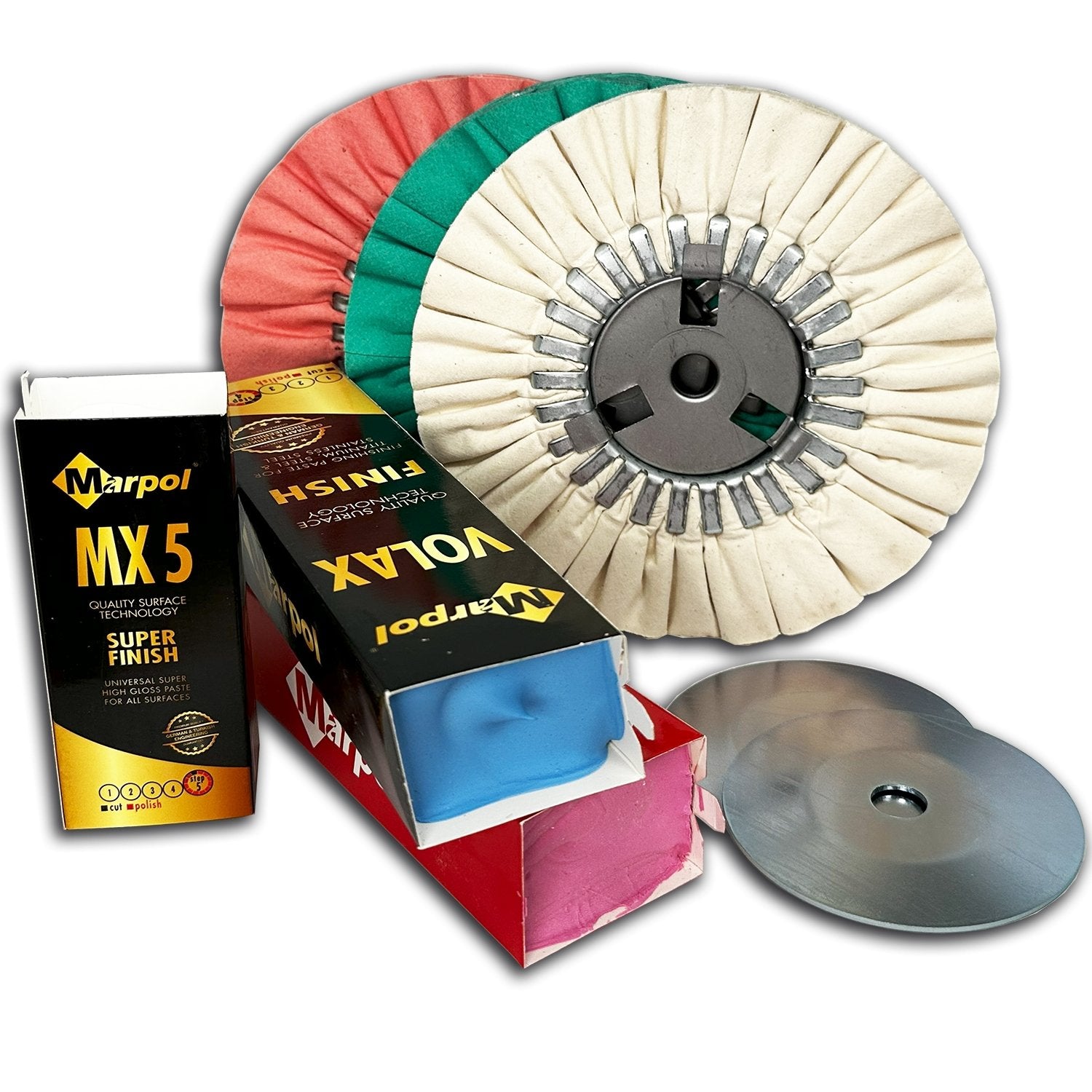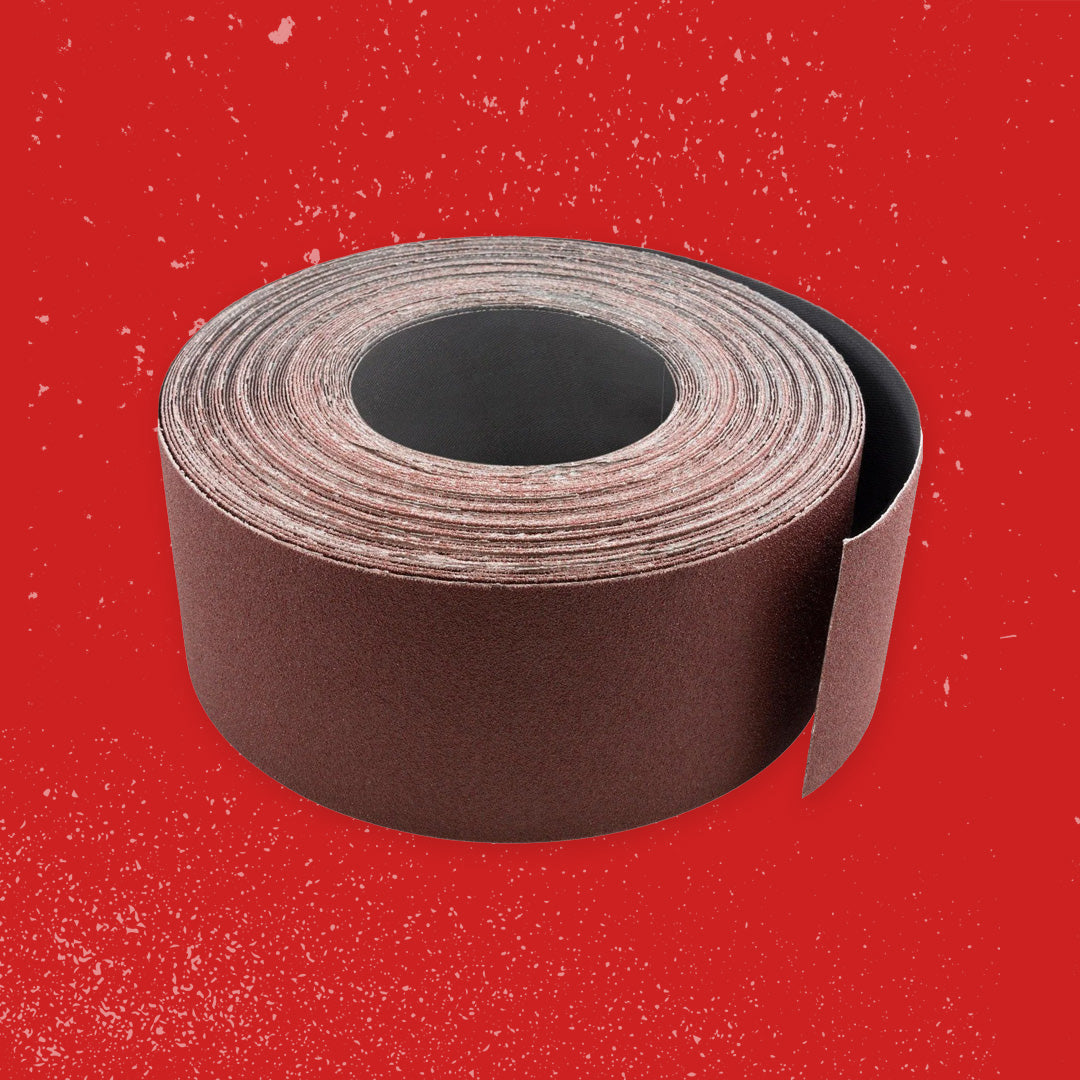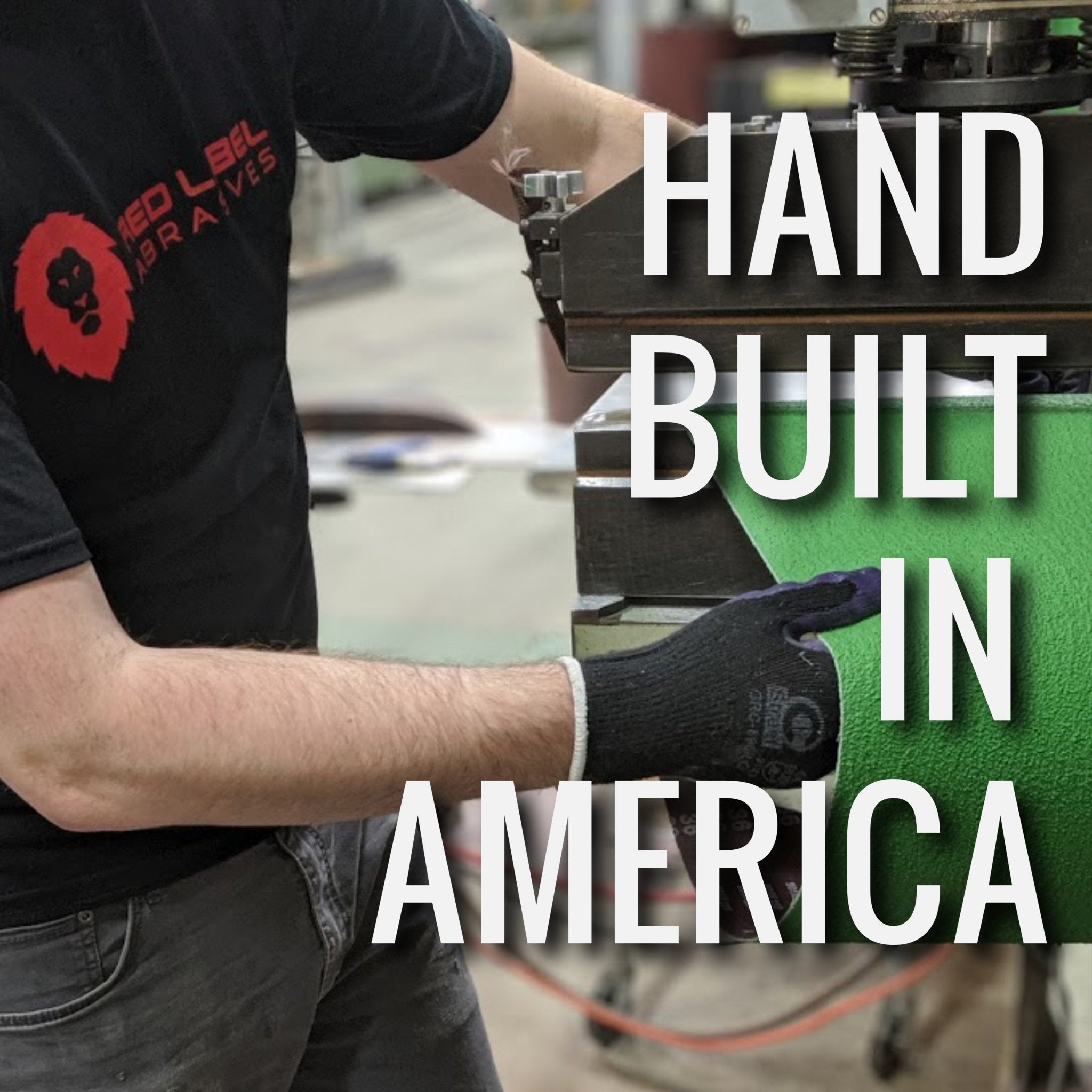Your Cart is Empty
Free Shipping over $150 (Excludes Oversized Products)
Free Shipping over $150 (Excludes Oversized Products)
Sanding Belts
Sanding Discs

The Best Sandpaper for Metal - Choosing the Right Grain
by David Kranker 7 min read

Quick Summary
Abrasives used in metalworking include aluminum oxide, silicon carbide, zirconia, and EdgeCore ceramic. The best sandpaper for metal depends on the type of metal being worked on, the desired surface finish, and the amount of material to be removed. When used in coarser grits, zirconia and EdgeCore ceramic excel at heavy-duty grinding and cutting applications while finer-grit aluminum oxide and silicon carbide are suitable for polishing and finishing.
- Surface preparation
- Grinding
- Polishing
- Sharpening
Since the properties of metal vary significantly from wood, plastic, glass, and other regularly-sanded materials, the key to a successful outcome is choosing the best sandpaper for metal. In this blog, the abrasive specialists at Red Label Abrasives provide some tips for choosing the right grain for your application.
Abrasive Grains for Metalworking
Abrasive grains are tiny particles bonded to a sandpaper’s backing material. In metalworking, there are several types of grains used, each with its unique characteristics and applications. Some of the common options are highlighted below.
Aluminum Oxide
Aluminum oxide is commonly used in metalworking. As a material, it is durable, hard, and can be used to grind, sand, and polish a wide range of materials, including steel, cast iron, and aluminum. Sandpaper intended for metalworking tends to be closed-coated, meaning that abrasive particles cover nearly the entire surface of the backing material.
Silicon Carbide
A hard and sharp abrasive material, silicon carbide is often used for metalworking applications where aggressive material removal is required. It generates less heat than other abrasives, making it a good choice for heat-sensitive applications. However, it is not as durable as some other abrasive materials, so it may not be the best choice for some high-volume or heavy-duty metalworking applications.
Zirconia
Zirconia is a tough, durable abrasive grain used for heavy-duty grinding and cutting applications. Its self-sharpening abrasive grains extend belt life up to two and a half times longer than aluminum oxide. It is particularly useful for grinding and cutting metals that are difficult to machine, such as high nickel alloys and titanium.
EdgeCore Ceramic
EdgeCore ceramic is widely considered the best abrasive grain for sanding metal. It is highly recommended for high-pressure grinding, as its micro-fracturing feature continuously exposes fresh abrasive grain during use. This abrasive is versatile, making it an ideal choice for knife makers and blacksmiths. Its functionality also extends to stock removal, blade profiling, and blade sharpening, making EdgeCore ceramic belts a valuable tool for anyone working with metals.
EdgeCore also provides additional benefits over common ceramic grains. EdgeCore abrasives include an additional stearate layer, which reduces heat buildup and clogging. This makes EdgeCore ceramic an even better abrasive for finishing and high-pressure grinding.
Each of these abrasive grains has its unique characteristics and applications in metalworking. The choice of abrasive grain depends on the material being worked on, the desired surface finish, and the type of operation being performed.
What Type of Metal Are You Working With?
The type of metal being worked with is a crucial factor to consider when choosing the appropriate abrasive grain. Different metals have varying levels of hardness, toughness, and other physical properties, which can affect how they respond to sandpaper. Using the wrong grain for a particular metal can result in a poor surface finish and increased wear on the abrasive.
Steel
Steel comes in various forms, including carbon, stainless, and alloy. While carbon steel is relatively soft and can be worked on using aluminum oxide, stainless steel is harder and more challenging due to its high chromium content. In this case, zirconia or EdgeCore Ceramic may be more suitable, as they are tougher and more durable.
Aluminum
Aluminum is a lightweight metal often used in manufacturing and construction applications. Being a soft metal, it can be easily scratched or damaged and therefore requires a gentler abrasive. Aluminum oxide abrasive grains are suitable for working on aluminum, as they are not as aggressive as other materials and can provide a good surface finish.
Titanium
Titanium is a highly durable metal used in the aerospace and medical industries. It is difficult to machine due to its high strength and toughness, so EdgeCore ceramic can be used for the best results when grinding and polishing titanium. Diamond is a super-hard abrasive material that can withstand the high pressures and temperatures associated with grinding hard metals like titanium.
Copper
Copper is a soft metal that is commonly used in electrical wiring and plumbing. It is relatively easy to work on using abrasive materials like aluminum oxide, which won’t resist loading with copper. However, care must be taken to avoid overheating the metal, which can cause it to anneal and become softer.
How Much Metal Needs to be Removed?
Metalworkers should consider the amount of material that needs to be removed when selecting an abrasive material. While stock removal and shaping call for coarser sandpaper that can withstand heat, finishing and polishing are less intense and can be accomplished by a finer grit and less aggressive abrasive.
Heavy Material Removal
If the amount of material to be removed is significant, a more aggressive abrasive material is required to get the job done quickly. For example, if you’re trying to shape a knife from a steel bar, you’ll want to use a coarser-grit (P40-P60) abrasive material such as EdgeCore ceramic or zirconia. These grains are tough, durable, and can provide a fast cut-rate, making them suitable for heavier material removal.
Medium Material Removal
If a moderate amount of material needs to be removed, a medium to a fine grit (P100 - P220) aluminum oxide or silicon carbide may be used. These grains are less aggressive than ceramic or zirconia but still provide a good cut rate, especially for shaping after stock removal has been accomplished.
Fine Material Removal
When polishing metal, fine or ultra-fine grit (P240 and up) aluminum oxide or silicon carbide sandpaper are recommended. Aluminum oxide is the preferred option for polishing hard metals like iron and steel, while silicon carbide is better suited for polishing softer metals such as aluminum and brass.
The amount of material that needs to be removed is an important consideration when choosing the best sandpaper for metal. Using the right abrasive and grit size material can help achieve the desired result quickly and efficiently while minimizing the amount of wear on the abrasive.
Our Most Popular Metal Sanding Abrasives
Tips for Sanding Metal with Sandpaper
The technique you use when sanding metal is critical to achieving a smooth and even finish. Always sand in the direction of the grain to avoid creating scratches or other imperfections on the surface. When using a sanding block or power tool, make sure to apply even pressure to avoid creating uneven surfaces. Other tips include:
- Use Safety Equipment:Sanding metal with sandpaper can create a lot of dust and debris, which can be harmful if inhaled. Always wear appropriate safety equipment such as a respirator, safety goggles, and gloves to protect yourself from dust and debris. Additionally, make sure to work in a well-ventilated area to reduce the risk of exposure to harmful fumes.
- Keep the Surface Clean:It is important to keep the surface being sanded clean and free from debris to achieve the best results. Use a clean cloth or compressed air to remove any dust or debris before, during, and after sanding.
- Avoid Overheating: Overheating can cause softer metal to warp or the abrasive to be less effective. To avoid overheating during more aggressive use, select an abrasive that’s intended for this type of application, such as silicon carbide and EdgeCore ceramic.
- Lubricate the Surface:Some applications, such as restoring a car’s finish, call for wet sanding. Using water, oil, or a specialized metalworking lubricant can remove scratches and other imperfections caused by dry sanding. However, you’ll want to make sure that you use sandpaper with grit and backing suitable for use in wet environments.
Get the Best Sandpaper for Metal at Red Label Abrasives
Choosing the right sandpaper for metalworking is essential to achieve a successful outcome, whether it be surface preparation, grinding, or polishing. Your choice should be guided by the type of metal being worked on, the amount of material to be removed, and the desired surface finish. By considering these factors and selecting the appropriate abrasive grain, you can achieve your desired results quickly and efficiently while minimizing wear on the abrasive.
At Red Label Abrasives, we sell sanding belts, sanding discs, and sanding sheets specially designed for different metalworking applications. Not only do we carry a wide variety of abrasive products, including aluminum oxide, ceramic, and zirconia, but we also provide exceptional customer service and competitive pricing. If you have questions or would like to place an order, call 844-824-1956 or fill out our contact form today! ABOUT THE AUTHOR
David Kranker is a writer and creative maker who has been covering the abrasive industry on the Red Label Abrasives Blog since 2020. David spends his time continually researching sanding techniques to provide readers with the latest and greatest information. In his free time, David utilizes abrasives for many different home and auto projects at his home in Delton, MI.
Our Most Popular Abrasives

EdgeCore Ceramic Sanding Belts

EdgeCore Ceramic Flap Discs

Buffing Kit
Shop By Product Category





Why Choose Red Label?
















